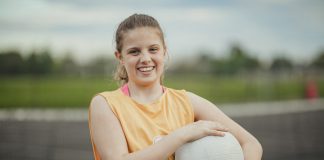In episode 27 of the Athlete Development Show, I spoke with Mystics and Silver Ferns defender Michaela Sokolich-Beatson. On the show, I asked Michaela what she thought good coaching looks like. Here is what she said:
“I think a coach who actually listens to their players. There’s nothing worse than having a coach who’s like, ‘This is how we’re going to do it, and this is it’. And coaches who let you explore and find your own strengths within what they want you to do.”
I think this advice is very wise, and here’s why.
1) Listening leads to understanding
An in-depth understanding of your athletes lets you create a learning environment that is best suited to them. For instance, what are their past experiences, physical strengths and weaknesses, psychological struggles and training likes and dislikes?
Michaela described an experience in her first year playing with the Mystics that sums up this idea nicely.
“There’s a game plan that requires us to keep the opposition off the circle edge, and it’s actually really hard to do. And at one stage, I remember [the coach] turning to us and going, ‘Can you actually do it, or do we need to change the game plan?’ And I remember thinking, ‘I’ve never been asked that before’. You know, coaches normally just let it go.”
Whether about the interpretation of a tactic or the logic behind an instruction, making an assumption about your athlete’s understanding can lead to confusion. Therefore, qualifying their understanding by asking for personalised feedback, such as what they think is required and whether or not they believe they have the skills to do it, is essential when attempting to teach your athletes something new.
2) Exploration increases learning
Michaela expressed a desire for exploration. In fact, this is not unique to her. Having the chance to play and find your own way of doing something is innate to us all. Unfortunately, when a coach is very explicit about methodology, it mutes an athlete’s freedom to explore. For instance, let’s return to what Michaela said about game plan.
“There’s a game plan that requires us to keep the opposition off the circle edge, and it’s actually really hard to do.”
Here, keeping the opposition off the circle edge is the outcome. It’s an overarching tactic and should, ultimately, be set by the coach. However, how the players go about achieving it (i.e., the methodology), both as individuals and as a collective, should be left up to them. Of course, doing so will likely take longer than if you directed them through it, one instruction at a time, but it won’t come at a cost of your players’ learning and enjoyment.
So, to help your athletes learn faster and achieve more in the sports that they love, remember these two important things:
1) Listening to your athletes increases your understanding as a coach, thus increasing your ability to set the right tasks in training, and;
2) Set the outcomes you want to see, but let your athletes find their own ways of achieving it.
Be the best you can be,
Craig





































